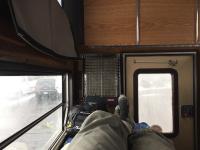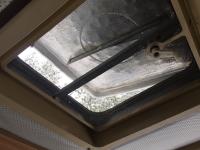I mentioned the generator/electric heater in my earlier post. I've never used that combo before with our Hawk, but, after our our last trip in the snow, thought it might be a viable option for those times where there is prolonged rain or snow and the moisture is building up inside the camper from propane heat. I used to carry a Honda eu2000 generator on a rack on the front hitch of our truck to recharge the battery on hunting trips. I stopped carrying it after I installed solar and doubled the battery capacity, because I haven't needed it. But the last snow trip got me thinking that for a longer trip in inclement weather, I might just bring the generator. And if I have the generator, I can use the small 1500w heater to supplement the furnace and/or Wave 3. We have used the 1500w electric heater during the rare times we have parked somewhere with shore power. They do a good job, but I think the furnace might also be needed in really cold weather.
IMHO, a 2000w generator would be the size to have, since most electric space heaters are 1500w (on high). For extended run sessions, the Honda generators can be fitted with a cap that allows you to connect an external outboard motor fuel tank. That may or may not be too much to bring with a FWC.
















